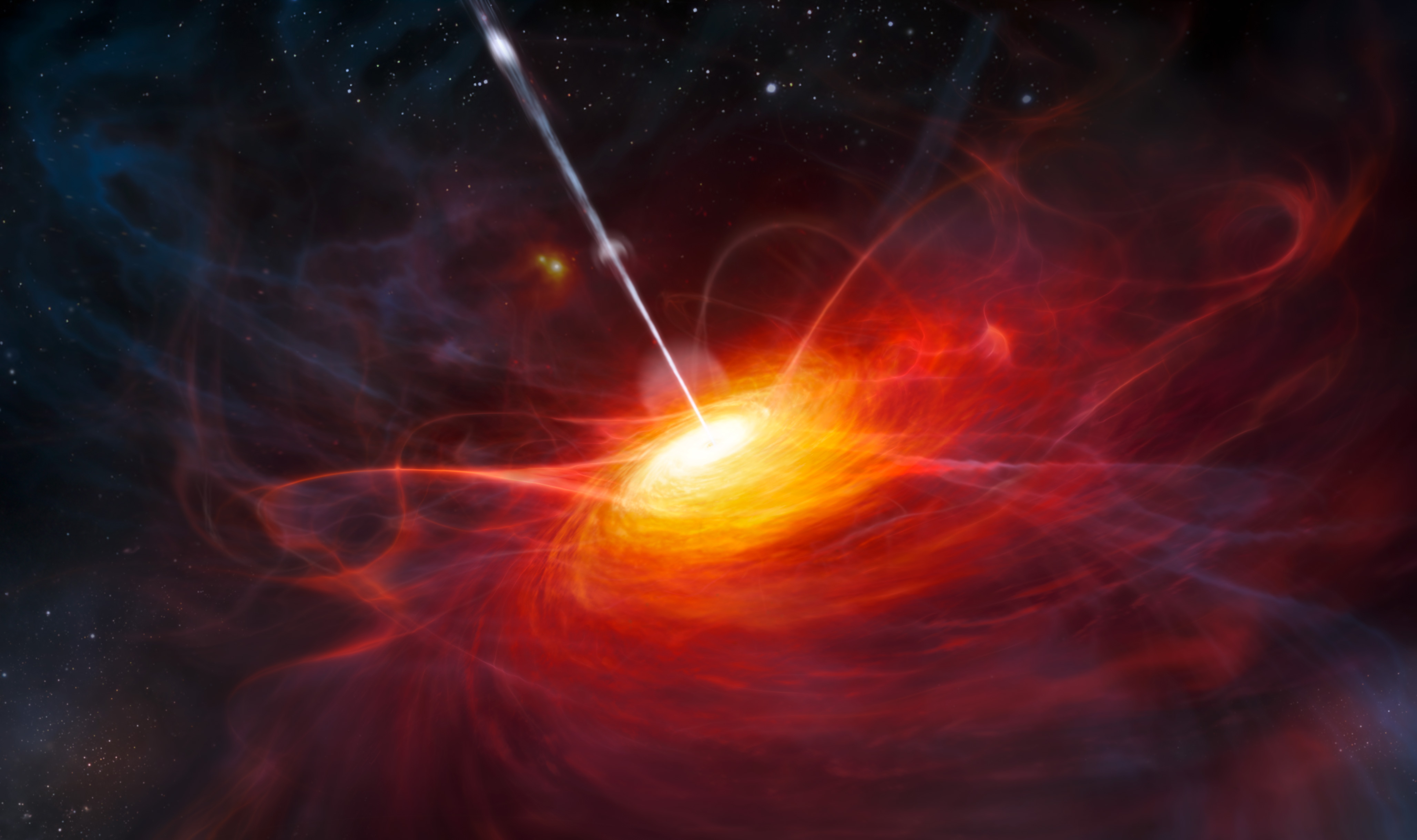Large Quasar Groups on:
[Wikipedia]
[Google]
[Amazon]
A large quasar group (LQG) is a collection of

quasar
A quasar is an extremely Luminosity, luminous active galactic nucleus (AGN). It is pronounced , and sometimes known as a quasi-stellar object, abbreviated QSO. This emission from a galaxy nucleus is powered by a supermassive black hole with a m ...
s (a form of supermassive black hole
A supermassive black hole (SMBH or sometimes SBH) is the largest type of black hole, with its mass being on the order of hundreds of thousands, or millions to billions of times the mass of the Sun (). Black holes are a class of astronomical obj ...
active galactic nuclei
An active galactic nucleus (AGN) is a compact region at the center of a galaxy that has a much-higher-than-normal luminosity over at least some portion of the electromagnetic spectrum with characteristics indicating that the luminosity is not prod ...
) that form what are thought to constitute the largest astronomical structures in the observable universe
The observable universe is a ball-shaped region of the universe comprising all matter that can be observed from Earth or its space-based telescopes and exploratory probes at the present time, because the electromagnetic radiation from these obj ...
. LQGs are thought to be precursors to the sheets, walls and filaments of galaxies found in the relatively nearby universe.
Prominent LQGs
On January 11, 2013, the discovery of theHuge-LQG
The Huge Large Quasar Group, (Huge-LQG, also called U1.27) is a possible structure or pseudo-structure of 73 quasars, referred to as a large quasar group, that measures about 4 billion light-years across. At its discovery, it was identified as ...
was announced by the University of Central Lancashire
, mottoeng = "From the Earth to the Sun"
, established = as Institution for the Diffusion of Useful Knowledgere-established 1992 (University status granted)
, type = Public
, chancellor ...
, as the largest known structure in the universe by that time. It is composed of 74 quasar
A quasar is an extremely Luminosity, luminous active galactic nucleus (AGN). It is pronounced , and sometimes known as a quasi-stellar object, abbreviated QSO. This emission from a galaxy nucleus is powered by a supermassive black hole with a m ...
s and has a minimum diameter of 1.4 billion light-year
A light-year, alternatively spelled light year, is a large unit of length used to express astronomical distances and is equivalent to about 9.46 trillion kilometers (), or 5.88 trillion miles ().One trillion here is taken to be 1012 ...
s, but over 4 billion light-years at its widest point. According to researcher and author, Roger Clowes, the existence of structures with the size of LQGs was believed theoretically impossible. Cosmological structures had been believed to have a size limit of approximately 1.2 billion light-years.
List of LQGs

See also
*List of largest cosmic structures
This is a list of the largest cosmic structures so far discovered. The unit of measurement used is the light-year (distance traveled by light in one Julian year; approximately 9.46 trillion kilometres).
This list includes superclusters, galaxy ...
* Large-scale structure of the cosmos
The observable universe is a ball-shaped region of the universe comprising all matter that can be observed from Earth or its space-based telescopes and exploratory probes at the present time, because the electromagnetic radiation from these obj ...
References
Further reading
* R. G. Clowes; "Large Quasar Groups - A Short Review"; 'The New Era of Wide Field Astronomy', '' ASP Conference Series'', Vol. 232.; 2001; Astronomical Society of the Pacific; ; {{galaxy * *Large Quasar Group